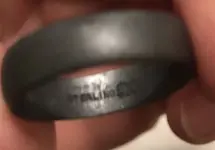Beautiful buttons.
I’ve tried a number of times to squash some of the myths about silver marks in general and British hallmarks in particular… such as: “it has a lion passant so it must be sterling”; "it has a crown so it was made in Sheffield"; "the anchor means it was made in Birmingham" etc. but here goes again with a potted version:
Unlike America (and Canada until the early 20th Century) where manufacturers effectively “marked their own homework”, British hallmarks were applied by an official Assay Office in one of a number of designated cities where the sponsor had registered his mark.
As such, the hallmark set comprises what are known as compulsory or “statutory marks” governed by law and a piece could not legally be sold or marked as “silver” without these marks. The penalties were high. The compulsory marks would be: standard mark; city mark; date letter; duty mark (between 1784-1890 only); and sponsor’s mark (which may or may not be the actual maker)… but not necessarily in that order. The design of things like crowns, lions, leopards etc was also tightly regulated.
Each Assay Office also specified its own font styles for date letter sequences and used specific cartouche (shield) shapes for the marks such that there could no confusion over what year a particular date letter represents. Words such as “sterling” were not used as part of these compulsory marks and, although a maker could add such words (hardly ever the case in Britain), it would be illegal unless the piece was also officially marked with the compulsory set, including its standard (usually the lion passant for Sterling).
You will often see these pseudo hallmarks on British silver plate (but not with the word “sterling”), although British manufacturers tended not to sail too close to the wind in their imitations of official marks. The use of the "crown" on silver plate (not just by Sheffield makers), although technically prohibited by codes of practice, was tolerated until around 1895 after its prohibition was reaffirmed by legislation. Makers outside Britain, and especially in America, were outside the reaches of British justice and used imitation marks with a greater degree of audacity on both silver and silver plate (as well as on base metal silver imitations such as "German silver").
Neither of the rings you're showing have British hallmarks. They’re “pseudo hallmarks” applied unofficially, and most probably American. When the word “sterling” appears on American pieces there’s a very high likelihood that the piece is actually silver, but a much lesser chance otherwise.











